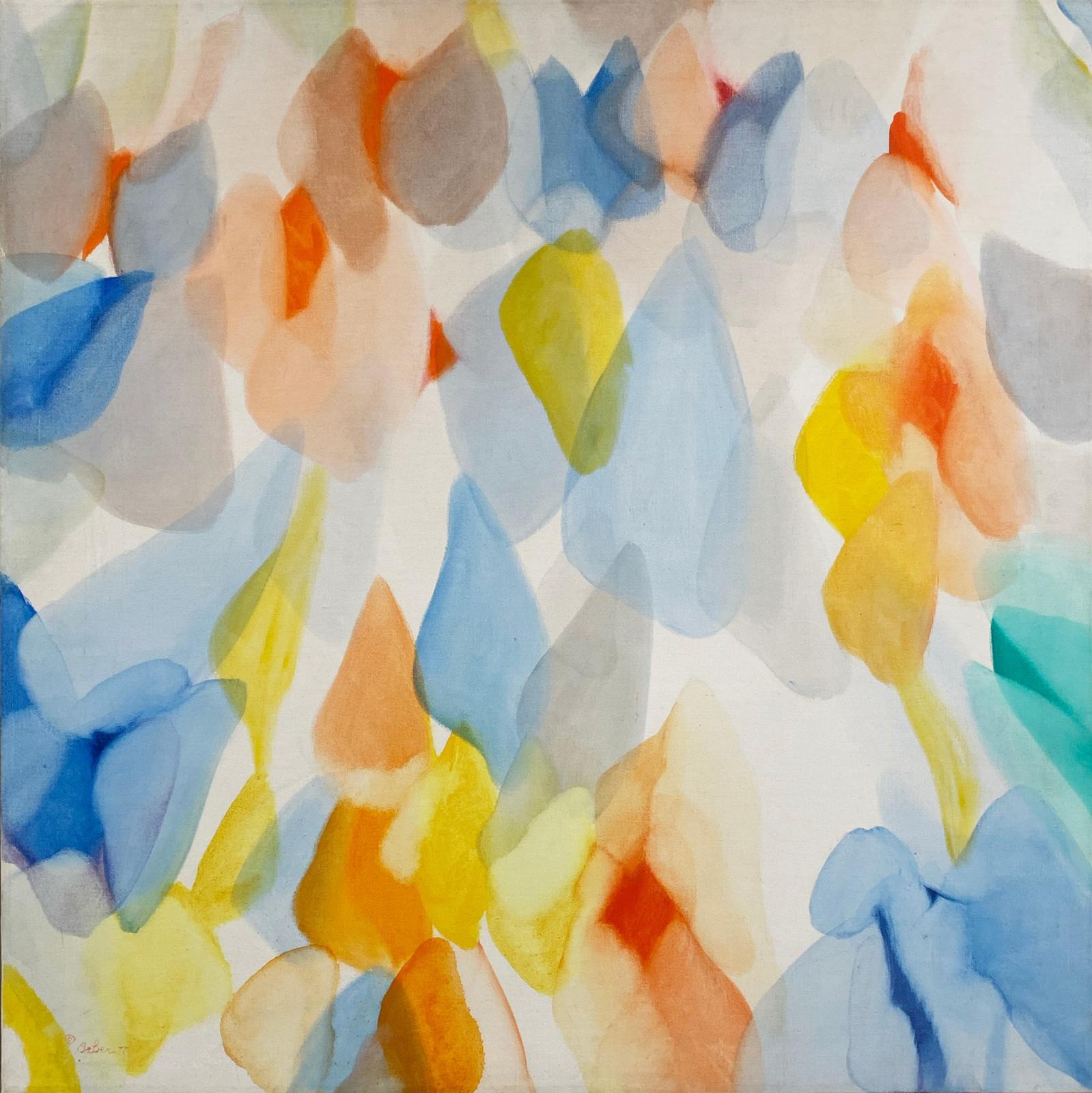








Framed: 32 1/4 x 32 1/4 inches
artist
Alice Baber (1928-1982) was an American abstract expressionist painter, best known for the organic, biomorphic forms she painted using a staining technique which allowed her to explore pure color and elicit a sense of radiant light. Babar attended Lindenwood College in Missouri, and soon transferred to Indiana University, Bloomington, where she was able to study with the figurative expressionist painter, Alton Pickens. Baber completed her Master of Arts degree in 1951 and travelled to Europe, where she spent a short period studying at the École des Beaux- Arts in Fontainebleau, France, before settling in New York City.
In 1958, Baber had her first solo exhibition at the March gallery and was invited to her first residency at the Yaddo colony, in Saratoga Springs, New York. Before the end of the year Baber travelled again to France, deciding to live in Paris for six months of every year. At the time, Paris was home for a group of North American painters, including Sam Francis, Joan Mitchell, Shirley Jaffe and others, that became known to some as the École du Pacifique, although their association was primarily social rather than stylistic. In 1959, Baber was chosen, along with Helen Frankenthaler, to participate in the first edition of the Jeune Biennale by Darthea Speyer, the director of the American Cultural Centre in Paris. Over the next few years her work was seen in several exhibition in Paris, London, Edinburgh, and Hamburg.
Baber’s stylistic development during the period between 1958 and the mid-1970s is characterized by a series of experiments with color and technique. Having turned to abstraction in 1958, she began exploring a monochromatic approach to painting, primarily using shades of red. By 1960 Baber came to add yellows, greens, and lavender to her work. She gradually incorporated a growing variety of colors into her canvases, a process that reached its hiatus by the mid 1970s when she finally introduced black to her work, achieving a new range of effects and subtleties.
An active feminist, Baber participated in several exhibitions dedicated to women artists, notably Women Choose Women, held at the New York Cultural Center in 1972, curated by Lucy Lippard. Throughout her career, Baber participated in numerous institutional group shows, including at the Corcoran Art Gallery, Washington, D.C. (1972), and Whitechapel Gallery, London (1966). Today, she is represented in over 40 public institutions around the world, with works in major museums such as the Metropolitan Museum of Art, the Solomon R. Guggenheim Museum, the Whitney Museum of American Art, the Museum of Modern Art, New York, the Albertina Museum, Vienna and the Stedeljik Museum, Amsterdam.








